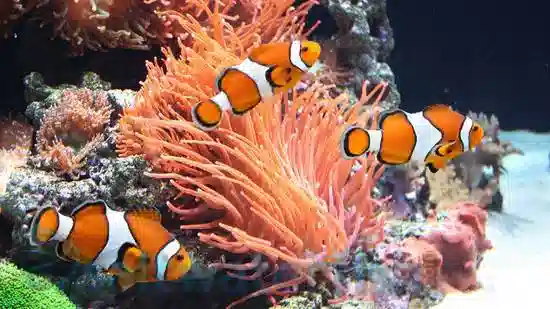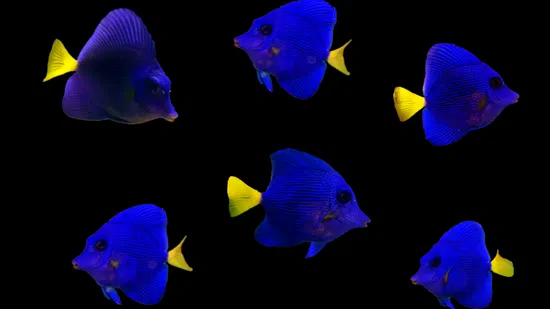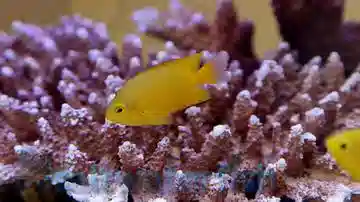False Percula Ocellaris Clownfish - Captive Bred
Amphiprion ocellaris
(12 Reviews)

False Percula Ocellaris Clownfish - Captive Bred
Amphiprion ocellaris
(12 Reviews)
{{ item.name }}
Size: {{ item.extra_field_3 }}
${{ getFormattedPrice(item.saleprice) }} ${{ getFormattedPrice(item.price) }}
To join the waiting list, click here
Free Shipping
With
$199.00
or more in Marine Life.
More details...
False Percula Ocellaris Clownfish - Captive Bred Care Facts
| Care Level: | Easy |
|---|---|
| Temperament: | Peaceful |
| Diet: | Omnivore |
| Reef Safe: | Yes |
| Minimum Tank Size: | 20 gallons |
| Max Size: | 3 inches |
The False Percula Clownfish (Amphiprion ocellaris): A Timeless Classic
The False Percula Clownfish (Amphiprion ocellaris), also known as the Ocellaris Clownfish, is one of the most iconic and beloved species in the saltwater aquarium hobby. Renowned for its striking appearance and playful behavior, this clownfish has captured the hearts of marine enthusiasts worldwide. Let's delve into the False Percula Clownfish's habitat, reef-safe nature, size, lifespan, diet, aquaculture options, compatibility, suitable tank mates, symbiotic relationships, tank requirements, other common names, and compatible tank mates.
Habitat of the False Percula Clownfish
The False Percula Clownfish is native to the warm waters of the Indo-Pacific region, including the Red Sea and the western Pacific Ocean. In the wild, they inhabit coral-rich lagoons and reefs, forming a mutualistic relationship with certain species of sea anemones.
Reef-Safe Nature
The False Percula Clownfish is entirely reef-safe and poses no threat to corals or other invertebrates. They form a unique and beneficial symbiotic relationship with certain species of sea anemones.
Size and Lifespan
False Percula Clownfish can grow to be about 2.5 to 3 inches (6.5 to 8 cm) in length. With proper care, they can have a lifespan of up to 10 years in a well-maintained aquarium.
Diet and Feeding
In their natural habitat, False Percula Clownfish are omnivores, feeding on various tiny organisms, including algae, zooplankton, and small crustaceans. In a home aquarium, they readily accept a diet of high-quality frozen or live foods like brine shrimp, mysis shrimp, and marine pellets.
Aquaculture Success
The False Percula Clownfish is widely available in the aquarium trade, and captive-bred specimens are readily accessible. Breeding and propagating this species in captivity have been highly successful, making them a sustainable and eco-friendly choice for marine aquariums. They are also hardier than their wild-caught cousins.
Compatibility with Tank Mates
False Percula Clownfish are generally peaceful and can coexist with various tank mates. However, they may display territorial behavior towards other clownfish, especially those of the same or similar species.
Suitable Tank Mates
When selecting tank mates for the False Percula Clownfish, consider these peaceful options:
- Cardinalfish: Peaceful and colorful, cardinalfish make suitable tank mates for the False Percula Clownfish.
- Firefish (Nemateleotris magnifica): These small and peaceful fish share a compatible tank environment with the clownfish.
- Dottybacks (e.g., Pseudochromis fridmani): Certain species of dottybacks can coexist with the clownfish, adding color and personality to the tank.
- Royal Gramma (Gramma loreto): Royal Grammas are peaceful and can make suitable tank mates.
- Hawkfish (e.g., flame hawkfish): Peaceful hawkfish species can be compatible tank mates for the clownfish.
Symbiotic Relationships
In the wild, False Percula Clownfish form a mutualistic symbiotic relationship with certain species of sea anemones. They live among the anemone's tentacles, gaining protection from predators while providing the anemone with food and nutrients.
Tank Requirements
To provide a suitable environment for the False Percula Clownfish, the aquarium should have plenty of live rock and hiding spots, along with open areas for swimming. A suitable sea anemone is unnecessary, as captive-bred clownfish can thrive without one.
Other Common Names for the False Percula Clownfish
In addition to the name "False Percula Clownfish" or "Ocellaris Clownfish," this species is also known as the "Common Clownfish" or "Clown Anemonefish."
The False Percula Clownfish: A Timeless Classic
The False Percula Clownfish (Amphiprion ocellaris) is a timeless classic and a delightful addition to saltwater aquariums. Its vibrant colors and playful behavior make it popular among marine enthusiasts. Aquarists can enjoy the beauty and charm of these captivating clownfish by providing them with a suitable environment, compatible tank mates, and proper care.
Super healthy and enjoying their new home right away...what's for lunch mom? Great price! Very pretty fish!
Reviewed by: Bridget Meyers on Oct. 23, 2024
Always love these guys. So cute and always in good health
Reviewed by: William Brooks on Sept. 6, 2024
Arrived in perfect condition and have acclimated well will buy again!
Reviewed by: Mckinnley Tollison on Aug. 1, 2024
Reviewed by: Gwen Baines on Oct. 2, 2023
Reviewed by: Andrew Zeigler on Aug. 14, 2023
Reviewed by: J.P. Chen on Aug. 13, 2023
Reviewed by: Nicholas Jacobsson on Aug. 9, 2023
Reviewed by: Richard Walker on Aug. 8, 2023
Reviewed by: William Shelton on Aug. 2, 2023
Reviewed by: William Shelton on July 28, 2023
Love these fish very friendly with other fish in our tank
Reviewed by: Kathy Wirth on July 13, 2023
I was happily surprised at how large & healthy the clownfish were. They acclimated beautifully and quickly became tank favorites.
Reviewed by: Dora on Aug. 31, 2014








